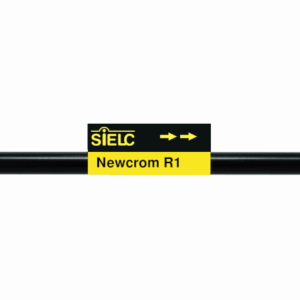| CAS Number | 80-43-3 |
|---|---|
| Molecular Formula | C18H22O2 |
| Molecular Weight | 270.373 |
| InChI Key | XMNIXWIUMCBBBL-UHFFFAOYSA-N |
| LogP | 5.50 |
| Synonyms |
|
Applications:
HPLC Method for Phenol – Acetone Production and Impurities
December 28, 2018
HPLC method for Phenol – Acetone production and impurities
High Performance Liquid Chromatography (HPLC) Method for Analysis of Phenol, 2-Phenyl-propanol, Acetophenone, Cumene Hydroperoxide, Cumene, Dicumyl Peroxide
Phenol is an organic compound with the molecular formula C6H5OH.
Properties: Appearance: Typically white crystals that turn a light pink due to oxidation.
Molecular weight: ~94.11 g/mol
Solubility: Soluble in water and alcohol.
Uses: Topical skin disinfectant.
2-Phenyl-propanol is an organic compound with the molecular formula C9H12O.
Properties: Appearance: Typically a white or yellow odorless solid.
Molecular weight: ~136.19 g/mol
Solubility: Soluble in organic solvents.
Uses: Organic synthesis.
Acetophenone is an aromatic ketone with the molecular formula C6H5COCH3.
Properties: Appearance: Typically a colorless or yellow liquid with a pungent odor.
Molecular weight: ~120.4 g/mol
Solubility: Soluble in organic solvents.
Uses: Fragrance ingredient.
Cumene Hydroperoxide is an organic compound with the molecular formula C9H12O2.
Properties: Appearance: Typically a colorless or yellow liquid with a pungent odor.
Molecular weight: ~152.19 g/mol
Solubility: Soluble in organic solvents.
Uses: Used in production of phenol and acetone.
Cumene is a hydrocarbon with the molecular formula C9H12.
Properties: Appearance: Typically a colorless liquid with a pungent odor.
Molecular weight: ~120.19 g/mol
Solubility: Soluble in organic solvents.
Uses: Used in production of phenol and acetone.
Dicumyl Peroxide is a organic peroxide with the molecular formula C18H22O2.
Properties: Appearance: Typically white crystals.
Molecular weight: ~270.37 g/mol
Solubility: Soluble in organic solvents.
Uses: Used in production of rubber and plastics. Phenol, 2-Phenyl-propanol, Acetophenone, Cumene Hydroperoxide, Cumene, and Dicumyl Peroxide can be retained and analyzed using the Newcrom R1 stationary phase column. The analysis utilizes an gradient method with a simple mobile phase consisting of water, acetonitrile (MeCN). Detection is performed using UV.
Phenol, 2-Phenyl-propanol, Acetophenone, Cumene Hydroperoxide, Cumene, Dicumyl Peroxide can be retained and analyzed using the Newcrom R1 stationary phase column. The analysis utilizes a gradient method with a simple mobile phase consisting of water, acetonitrile (MeCN). Detection is performed using UV.
| Column | Newcrom R1, 4.6 x 100 mm, 3 µm, 100 A, dual ended |
| Mobile Phase | Gradient MeCN – 10-100%, 20 min |
| Buffer | No |
| Flow Rate | 1.0 ml/min |
| Detection | UV, 207 nm |
| Class of Compounds |
Neutral, Basic, Hydrophobic |
| Analyzing Compounds | Acetophenone, Dicumyl peroxide, Cumene hydroperoxide, Cumene, Phenol |
Application Column
Newcrom R1
Column Diameter: 4.6 mm
Column Length: 100 mm
Particle Size: 3 µm
Pore Size: 100 A
Column options: dual ended
Cumene
Cumene hydroperoxide
Dicumyl peroxide
Phenol

Separation of Dicumyl peroxide on Newcrom R1 HPLC column
February 16, 2018
Dicumyl peroxide can be analyzed by this reverse phase (RP) HPLC method with simple conditions. The mobile phase contains an acetonitrile (MeCN), water, and phosphoric acid. For Mass-Spec (MS) compatible applications the phosphoric acid needs to be replaced with formic acid. Smaller 3 µm particles columns available for fast UPLC applications. This liquid chromatography method is scalable and can be used for isolation impurities in preparative separation. It also suitable for pharmacokinetics.
Application Column
Newcrom R1
The Newcrom columns are a family of reverse-phase-based columns. Newcrom A, AH, B, and BH are all mixed-mode columns with either positive or negative ion-pairing groups attached to either short (25 Å) or long (100 Å) ligand chains. Newcrom R1 is a special reverse-phase column with low silanol activity.
Select options



